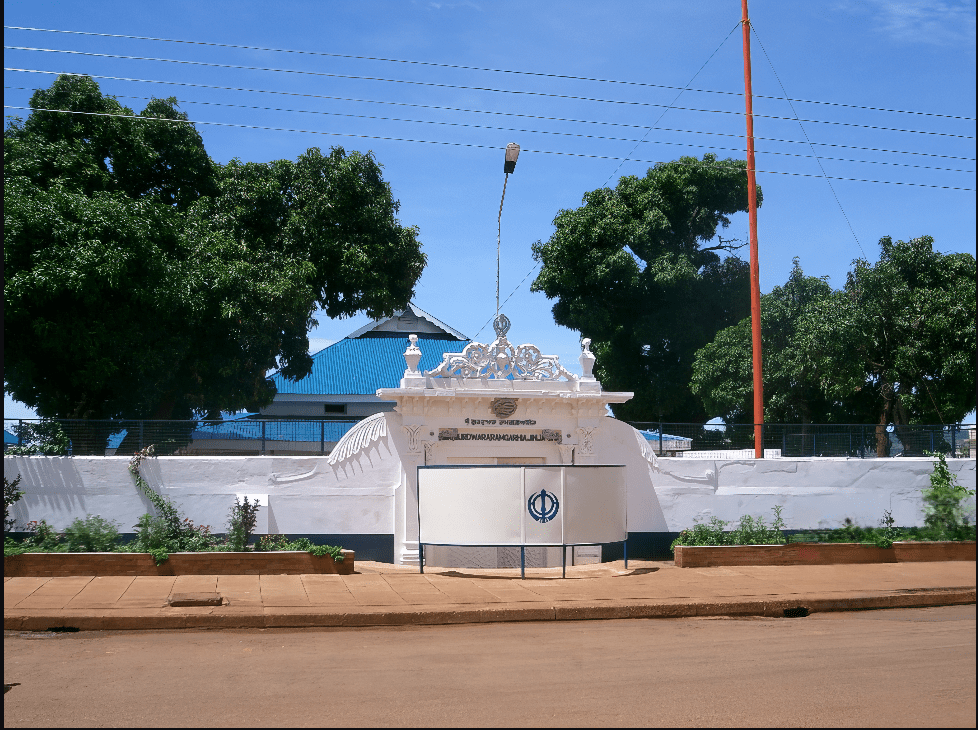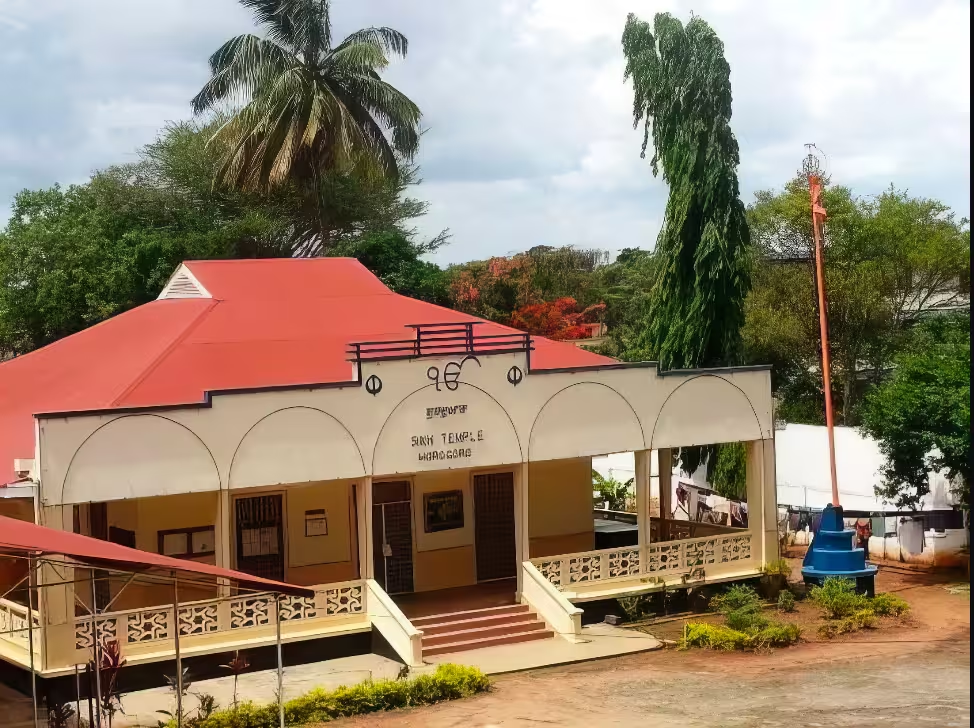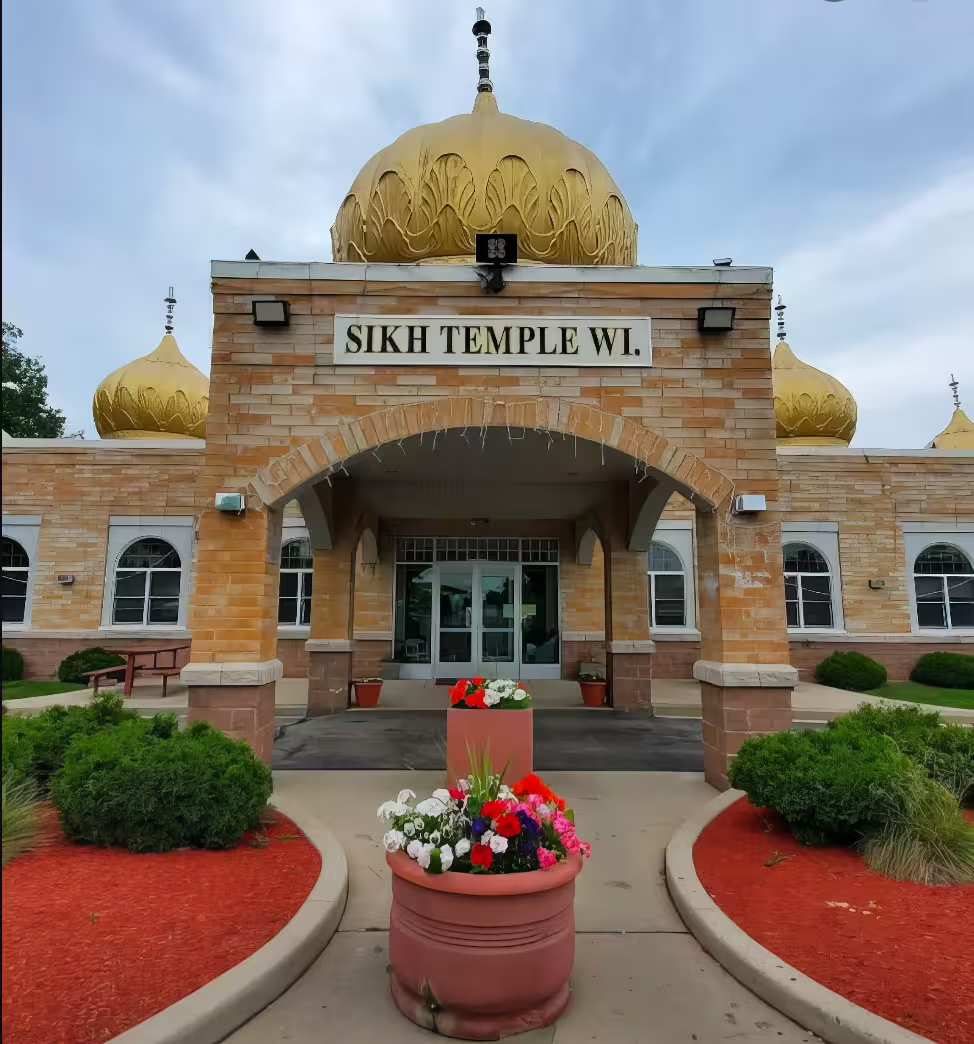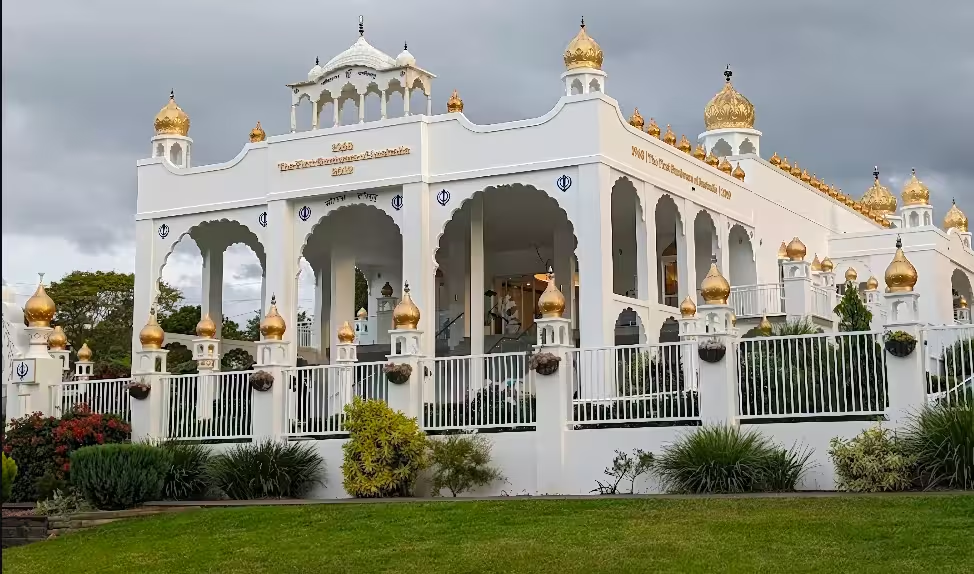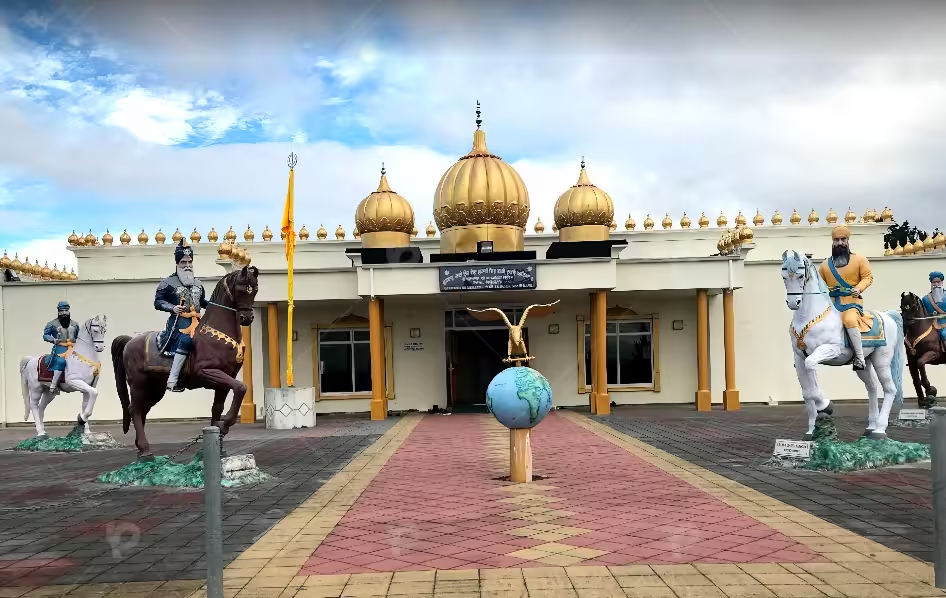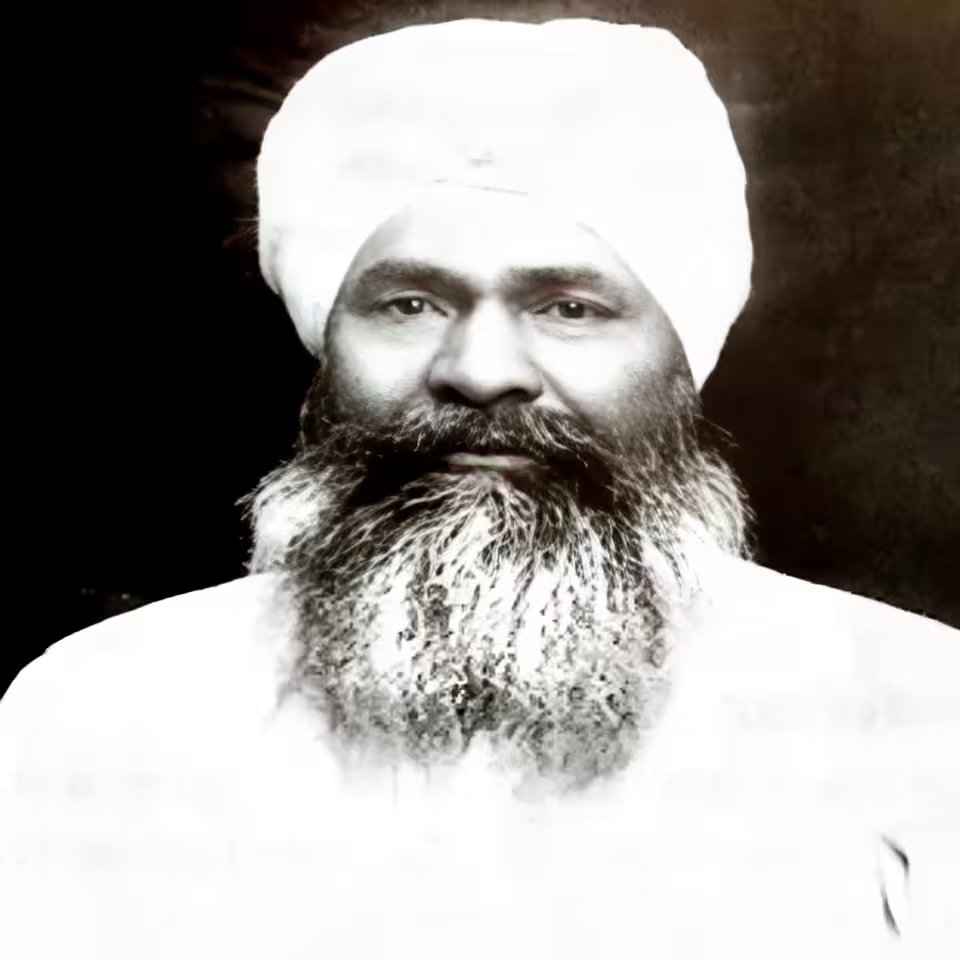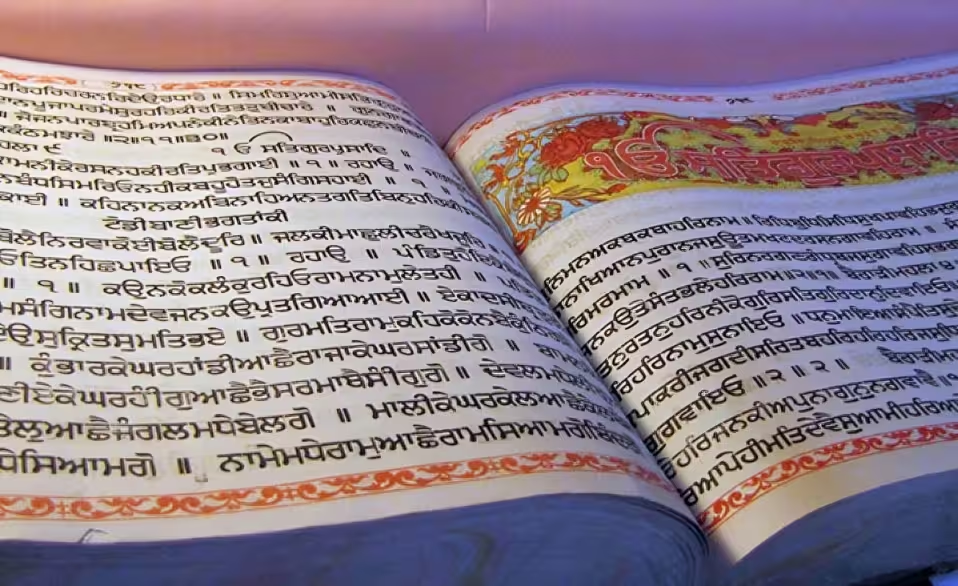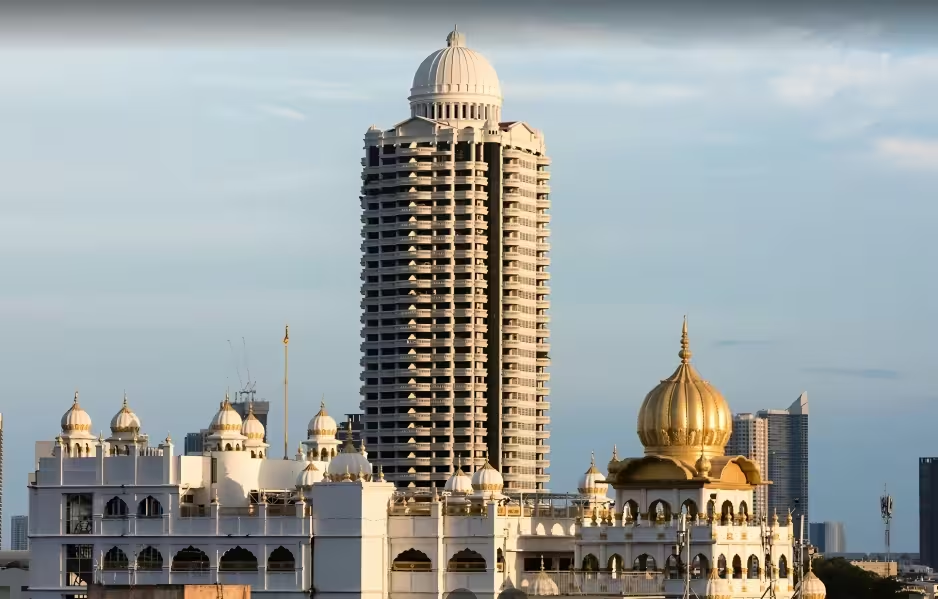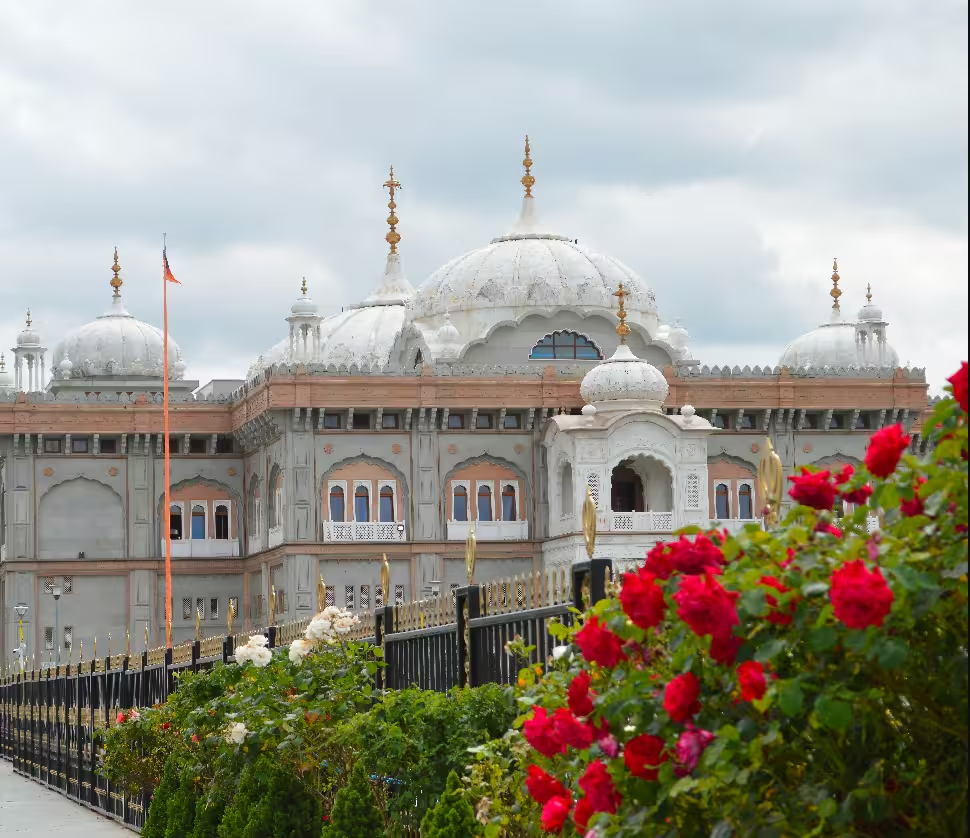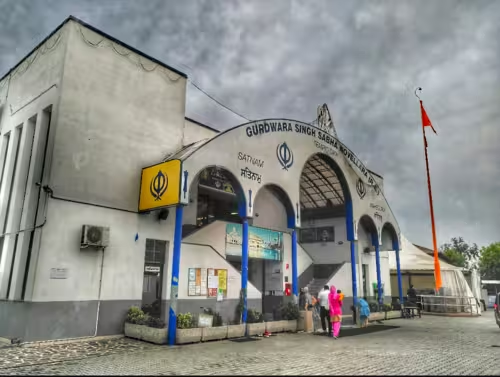Hard working and honest Sikhs are working and helping the economies of many foreign countries and spreading goodwill among all people. #SikhcommunityGlobal
Sikhs in New Zealand: A Vibrant Community’s Journey
New Zealand, a land of diverse cultures and stunning landscapes, is home to a thriving Sikh community that has grown from humble beginnings to become the country’s fastest-growing religious group. As of 2023, over 53,000 Sikhs make up 1.1% of New Zealand’s population, with a rich history of contribution and resilience. New Zealand has the world’s third-highest Sikh proportion behind Canada (2.1%) and India (1.7%).
From early pioneers in the 1890s to modern leaders shaping the nation, the Sikh story in New Zealand is one of faith, hard work, and integration. Let’s explore their journey, challenges, and vibrant presence.
With a presence across all 16 regions, over 50% of Sikhs resided in Auckland in 2018, contributing vibrantly to New Zealand’s multicultural landscape through Gurdwaras, community service, and cultural festivals like Vaisakhi.
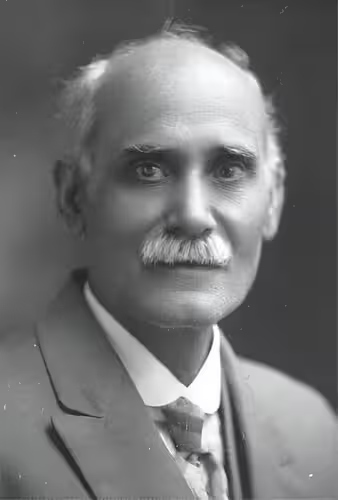
Arrival and Early Settlement of Sikhs
The Sikh presence in New Zealand began in the late 19th century, with the first identifiable Sikhs, brothers Phuman Singh and Bir Singh Gill from Punjab’s Moga district, arriving around 1890. Phuman, known as Phomen, came to find his brother Bir, a herbalist who married and lived among the Māori, embracing their culture. These early Sikh immigrants, mostly from Punjab, faced restrictive immigration laws, such as the Immigration Act of 1899, which limited large-scale migration. Despite this, a small wave settled between 1890 and 1910, primarily in Waikato, Auckland, Wellington, and Christchurch, often working as dairy farmers and clearing scrub to transform land into fertile farmland. Their integration with Māori communities and contributions to agriculture laid the foundation for future growth.
The turning point came in 1987 when New Zealand scrapped racial exclusion policies and introduced a race-neutral, points-based immigration system. By 1991, the Sikh population was 2,061, but it surged to 19,191 by 2013, 40,908 by 2018, and 53,406 by 2023, driven by students and skilled workers from Punjab. This rapid growth made Sikhism the fifth-largest and fastest-growing religion in New Zealand, with a 113% increase between 2013 and 2018 alone, though visa restrictions slowed growth slightly by 2023.
The Tribune
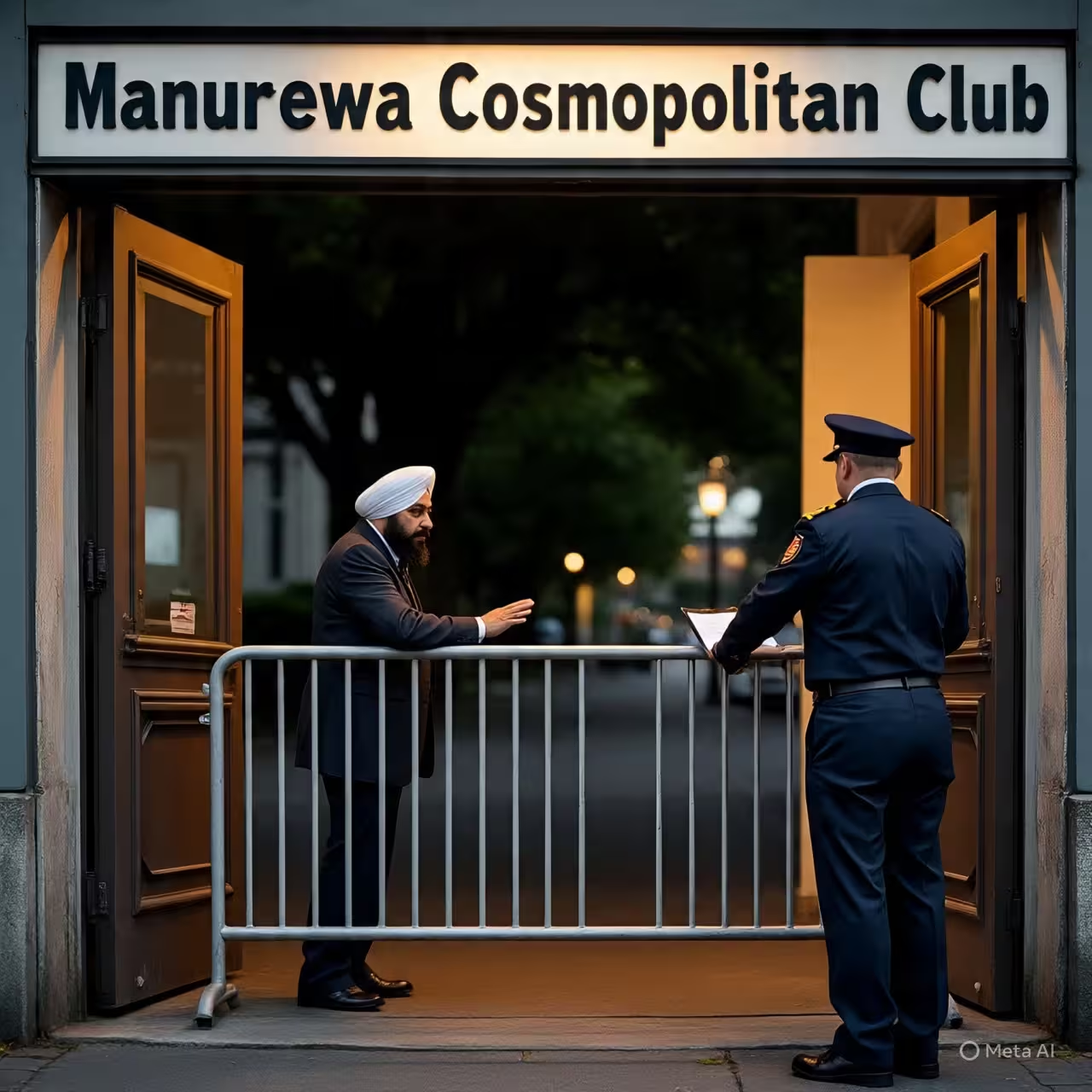
Struggles in a Multicultural Nation
Despite their contributions, Sikhs have faced challenges in New Zealand. The distinct Sikh identity—marked by the turban and kirpan—has occasionally led to misunderstandings. In 2009, a Sikh was denied entry to the Manurewa Cosmopolitan Club for wearing a turban, prompting a Human Rights Commission complaint. The kirpan, a ceremonial dagger, has raised concerns at schools and on domestic flights, though advocacy by groups like Sikh Aware led to its legalization (up to 6cm blades) on New Zealand flights. In 2022, Immigration NZ officials caused offense by entering a Hamilton Gurdwara without removing shoes or covering heads, leading to an apology after NZCSA intervention. These incidents highlight the need for cultural awareness, though Sikhs have largely integrated successfully.
The turning point came in 1987 when New Zealand scrapped racial exclusion policies and introduced a race-neutral, points-based immigration system. By 1991, the Sikh population was 2,061, but it surged to 19,191 by 2013, 40,908 by 2018, and 53,406 by 2023, driven by students and skilled workers from Punjab. This rapid growth made Sikhism the fifth-largest and fastest-growing religion in New Zealand, with a 113% increase between 2013 and 2018 alone, though visa restrictions slowed growth slightly by 2023.
Migrationpolicy
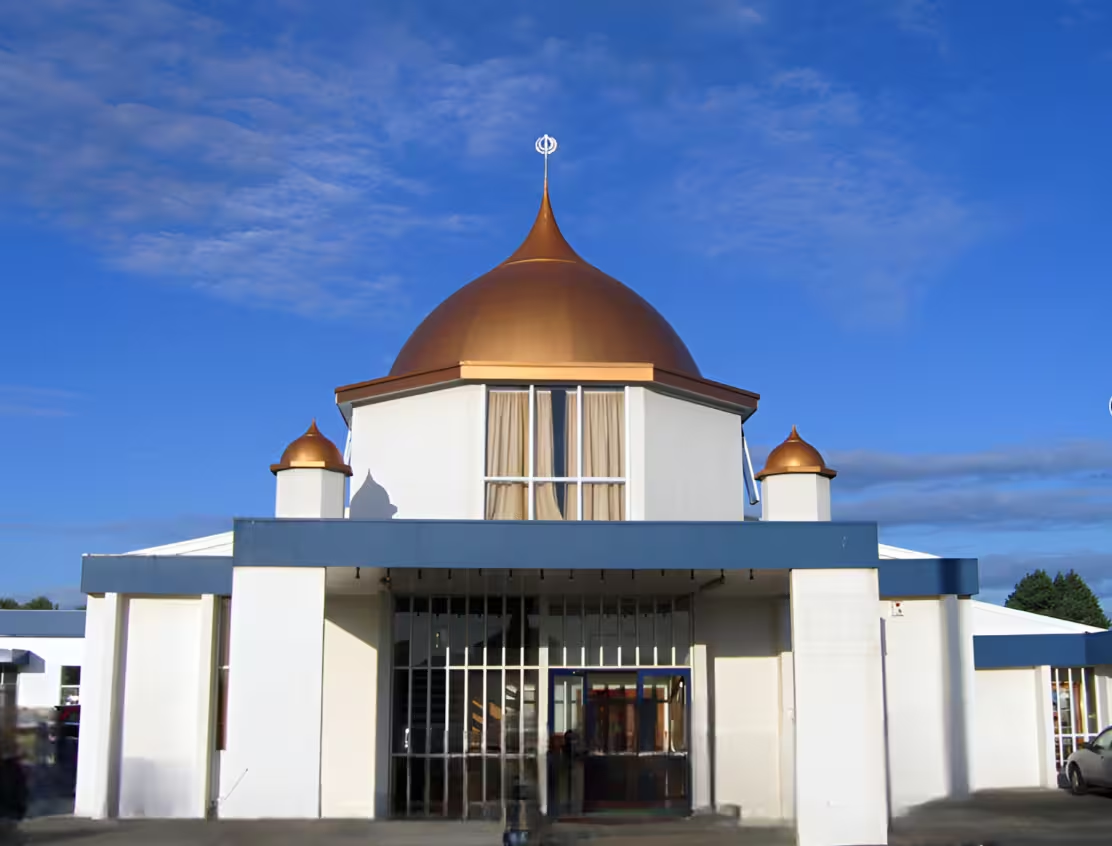
Establishing Community: Gurdwaras and Organizations
The Sikh community’s growth is mirrored by its institutional development. The New Zealand Sikh Society, formed in 1964, marked a milestone in organizing community efforts. The first Gurdwara, opened in Hamilton’s Te Rapa in 1977, was New Zealand’s first Sikh temple, followed by another in Ōtāhuhu in 1986. Today, over 25 Gurdwaras serve Sikhs across the country, with Papatoetoe in Auckland hosting three, reflecting the area’s significant Sikh population. The southernmost Gurdwara, in Christchurch, opened in 2009, symbolizing the community’s nationwide presence. These Gurdwaras, with doors open in all directions to welcome all, offer langar (free communal meals) and foster social cohesion through events like the Akhand Path, a 48-hour reading of the Guru Granth Sahib, notably during Guru Nanak Jayanti celebrations.
The Supreme Sikh Society of New Zealand (SSSNZ), established in 1982 as the Auckland branch of the New Zealand Sikh Society, oversees Gurdwaras, educational institutions, and sports facilities. With over 550 financial members, it received the 2020 People’s Choice NZ Food Heroes Award for distributing 26,500 food bags during COVID-19 lockdowns. The New Zealand Central Sikh Association (NZCSA), formed in 2022, unites 25 Gurdwaras and organizations, with leaders like Prithi Pal Singh and Daljit Singh promoting unity and advocacy.

Stories of Resilience and Contribution
The Sikh community’s ethos of sewa (selfless service) shines through their contributions. During the COVID-19 lockdown, organizations like Sikh Aware NZ, SSSNZ, and others delivered thousands of food parcels and blankets to those in need, earning praise from figures like Hon Dr. Megan Woods. Sikh dairy farmers, a backbone of the community, have been respected for generations, with pioneers like Phuman Singh running businesses like Abraham, Singh, and Company in Whanganui. Their integration with Māori culture, as seen in Bir Singh Gill’s life, reflects a unique bond.
New Zealand Helmet Law for Sikhs
According to the Land Transport (Road User) Rule 2004, specifically Clause 7.12, Sikhs are exempt from wearing a motorcycle helmet under certain conditions New Zealand Legislation:
A rider does not need to wear a safety helmet if:
They are an adherent of the Sikh religion, and
They are travelling at speeds not exceeding 50 km/h.
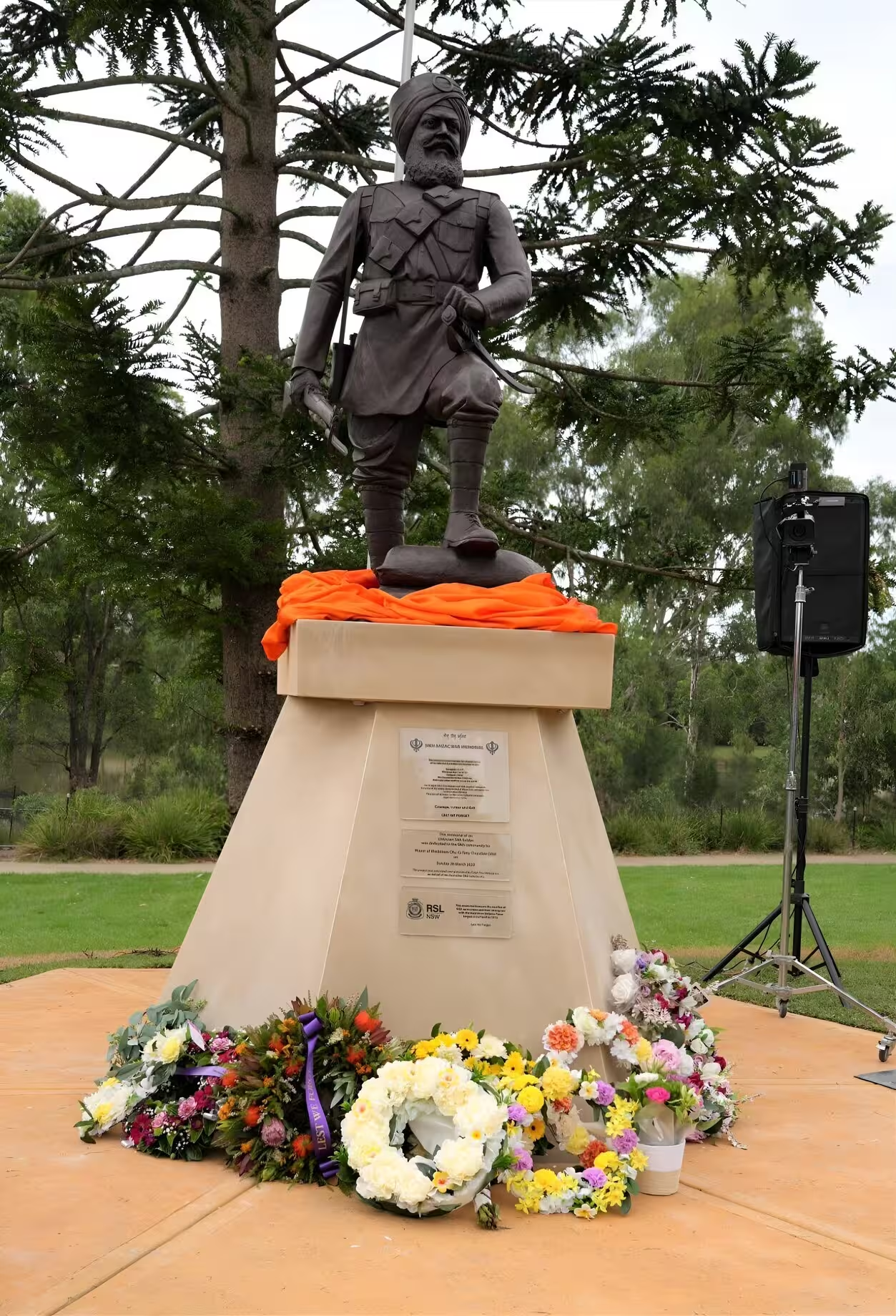

Military Heritage of Sikhs
Jagt Singh – “Soldier Singh”
Jagt Singh, nicknamed Soldier Singh, was born in Punjab in 1889 and migrated to New Zealand by 1913. Despite widespread racial and religious prejudice, he enlisted in the New Zealand Mounted Rifles in 1915.
He served in Gallipoli (Chunuk Bair) and in Egypt and Palestine, was seriously wounded in 1915, and discharged in December 1919.
For his service, he received the 1914–1915 Star, the Victory Medal, and the British War Medal.Wikipedia
These early Sikh soldiers were rare yet significant figures, often overcoming policy barriers to join the NZEF (New Zealand Expeditionary Force).RNZWikipedia
Recognizing Sikh ANZAC Contributions
At least 18 Sikhs enlisted in the Australian Imperial Force (AIF) and the NZEF during World War I. Their service and sacrifice are featured in exhibitions like Frames of Bravery, displayed at the Wellington City Library.RNZsikh.com.au
Among these were Jaget Singh and Ratan Chand-Mehra, who served in Gallipoli and Europe. Jaget Singh was awarded medals for bravery, while Mehra died in Belgium in 1917.RNZ
Census records from 1916 reveal that of 116 Sikh men in New Zealand, 62 volunteered for service, despite many being rejected due to discriminatory policies.RNZ
Modern Remembrance & Community Engagement
In 2025, the Sikh community in Aotearoa New Zealand participated in ANZAC Day services, honoring the shared values of duty and courage embodied by Sikh soldiers of WWI and WWII.
AucklandMuseum
New Zealand Helmet Law for Sikhs
According to the Land Transport (Road User) Rule 2004, specifically Clause 7.12, Sikhs are exempt from wearing a motorcycle helmet under certain conditions New Zealand Legislation:
A rider does not need to wear a safety helmet if:
They are an adherent of the Sikh religion, and
They are travelling at speeds not exceeding 50 km/h.
Punjab to Aotearoa
The journey of Sikhs from the fertile plains of Punjab to the green pastures of Aotearoa (New Zealand) is a tale of resilience, adaptation, and enduring faith. Drawn by opportunities in farming, forestry, and small trade, the earliest Sikh migrants arrived in the late 19th and early 20th centuries, often after working in Australia or on merchant ships. Leaving behind their villages in Punjab, they carried with them not just their skills but also the spiritual guidance of the Guru Granth Sahib. In New Zealand, they braved isolation, language barriers, and cultural differences, gradually establishing communities in rural heartlands like Waikato and Bay of Plenty. Over time, these pioneers laid the foundations for today’s vibrant Sikh presence, marked by thriving gurdwaras, interwoven cultural life, and continued contributions to the nation’s agricultural and economic growth.
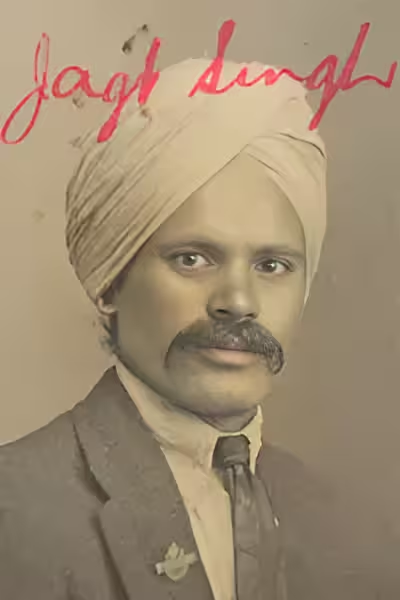
Jagat Singh - Gallipoli Campaign
Jagat Singh, also known as “Jagt Singh” or “Soldier Singh”, was a pioneering Sikh migrant born in 1889 in Shankar village, Punjab, India, who left his homeland at age 24 and arrived in New Zealand in 1913, seeking new opportunities amid the early waves of Indian immigration to the country.
After settling briefly, he enlisted in the New Zealand Expeditionary Force in January 1915 at Trentham Military Camp, becoming one of the few Indian New Zealanders to serve in World War I as a trooper with the Auckland Mounted Rifles (regimental number 13/1011), where he demonstrated remarkable dedication by serving for four years and 176 days, including deployments to Egypt and the Gallipoli Campaign.
Jagt Singh fought courageously in the Gallipoli Campaign, where he was seriously wounded at Chunuk Bair in August 1915 before being hospitalized in Heliopolis.
After recuperating, he rejoined his unit and continued to serve in Egypt and Palestine with the Auckland Mounted Rifles until his discharge in December 1919
Prior to his New Zealand service, Singh had nearly six years of experience in the British Indian Army, adding to his military prowess, and he was honorably discharged in 1919, leaving a legacy as an ANZAC hero who bridged Sikh heritage with New Zealand’s wartime history.

Notable Sikhs in New Zealand
Sukhi Turner: Mayor of Dunedin from 1995 to 2004, she was New Zealand’s first Sikh mayor.
Sukhi Turner, born in Ludhiana, Punjab, India, moved to New Zealand in the 1970s. Educated at Panjab University and the University of Otago, she entered public life as a Dunedin city councillor in 1992. In 1995, she became the first woman of Indian and Sikh heritage to be elected Mayor of Dunedin, serving until 2004.
During her tenure, Turner was known for her progressive policies, emphasis on environmental sustainability, and support for cultural diversity. She worked to strengthen Dunedin’s status as a university city and promoted heritage preservation. Turner was respected for her inclusive leadership style and her ability to connect with diverse communities.
Her three-term mayoralty marked a significant chapter in New Zealand’s local politics, inspiring women and migrants to pursue public office. In recognition of her service, she received honours including the New Zealand Suffrage Centennial Medal. Turner’s legacy remains as one of integrity, cross-cultural understanding, and visionary urban governance.
She remains a symbol of how people of Indian origin can be accepted into the highest levels of political leadership in New Zealand. Indian Weekender . Her legacy lies in her ability to balance her identities and to elevate Dunedin’s profile locally and internationally.

Kanwaljit Singh Bakshi
Kanwaljit Singh Bakshi was born in Delhi, India, in 1964 and migrated to New Zealand in 2001. Before entering politics, he worked in business and community service, actively engaging with migrant and multicultural groups.
In 2008, representing the National Party, Bakshi made history as New Zealand’s first Sikh and Indian-born Member of Parliament. His election marked a milestone for representation of South Asian and Sikh communities in New Zealand’s political landscape.
Bakshi focused on immigration issues, small business growth, and stronger ties between New Zealand and India. He also worked to address concerns of ethnic minorities and advocated for cultural understanding in policymaking.
He served in Parliament for three terms (2008–2020), contributing to select committees including Law and Order, Primary Production, and Transport and Industrial Relations.
Bakshi was also a vocal advocate for religious freedom, including the rights of Sikhs to wear turbans and carry the kirpan under certain conditions.

Daljit Singh
Daljit Singh is a prominent Sikh community leader in New Zealand and the President of the New Zealand Central Sikh Association (NZCSA).
He has been a strong advocate for Sikh rights, religious freedoms, and fair treatment of migrants.
In 2022, Singh played a key role in securing a formal apology from Immigration New Zealand for discriminatory treatment of Sikh applicants in the past.
This landmark apology was seen as a victory for the Sikh community’s dignity and equal rights in New Zealand.
Beyond advocacy, Singh works to promote interfaith harmony, cultural understanding, and stronger links between the Sikh community and wider New Zealand society. Under his leadership, NZCSA has supported initiatives related to education, youth engagement, and preservation of Sikh heritage.
He is known for his diplomatic approach, combining persistence with constructive dialogue in policy matters. Singh’s work has strengthened the public voice of Sikhs in New Zealand and ensured that their concerns reach national attention.
His efforts stand as an example of how community leadership can influence government accountability and foster social cohesion.

Cultural and Religious Presence
Sikhs celebrate festivals like Guru Nanak Jayanti with grand processions, shabad keertans, and gatka (Sikh martial arts) displays, as seen in 2024 at Takanini and Rotorua Gurdwaras. The Sikh Women’s Association and Sikh Youth New Zealand (SYNZ) promote cultural activities like phulkari embroidery and leadership camps, fostering community pride. The NZCSA’s formation in 2022 reflects a unified voice, with wings for women, youth, and immigration affairs, led by figures like Parmjeet Kaur Parmar.
Kushmiita Parmjeet Kaur Parmar (born 1970) is a New Zealand politician who was elected to the New Zealand parliament at the 2014 general election as a representative of the New Zealand National Party and became the first Indian-born woman to become a Member of the New Zealand Parliament. She was appointed as the Opposition Spokesperson for Research, Science and Innovation from 3 November 2017, and Statistics on 16 July 2020 and Opposition Associate Spokesperson for Economic Development on 12 March 2018. She was made the Chairperson of the Education and Workforce Select Committee in her second term from 14 May 2018 to until the end of that term and the Deputy Chairperson of the Transport and Industrial Relations Select Committee in her first term

